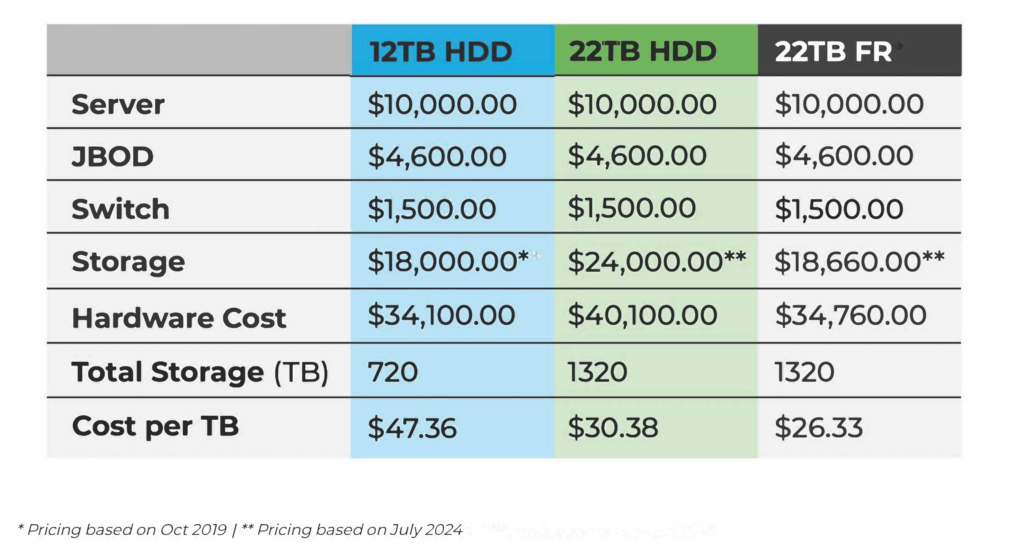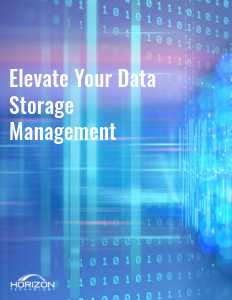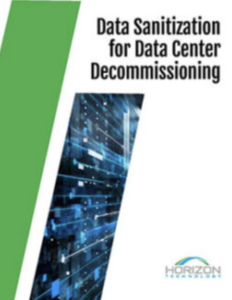Calculating total cost of ownership (TCO) is an effective way for IT managers to gain visibility into the true cost structure of hard drive storage, supporting better informed decisions about current and future investments.
By most accounts, we’re still in the very early days of what is an explosive period of growth in data generation. According to some estimates, we are collectively adding as many as 402 million terabytes of data per day, a number that will only grow as AI increasingly infuses itself into our day-to-day lives. But this phenomenon comes with a price tag. Compute costs are soaring, with storage power costs increasing 23% over the past five years — leaving businesses of all sizes scrambling to find strategies to manage data storage costs more efficiently.
Calculating total cost of ownership (TCO) is an effective way to give IT managers visibility into the true cost structure of their storage investments, helping them make more informed procurement decisions. Nor is TCO a new concept, first deployed in the 19th century by Napoleon, whose army ordnance managers methodically assessed the cost efficiency of their cannons, accounting for such factors as lifespan, repair needs, and reloading times.
Cannons aside, the method for crunching the TCO of an enterprise compute platform is not all that different from what Napoleon’s planners had in mind. Not only are we measuring cost against outcome at scale, but we’re looking at comparable variables: the fixed costs of hardware, software, and installation, together with operational costs such as power, cooling, and maintenance.
Once we have an overall understanding of TCO for our data storage platform, what then are some approaches for managing that figure down?
Approaches to Lowering TCO
1. Increase Storage Density
Generally speaking, the most direct way to lower TCO is to reduce your fixed and variable costs insofar as possible. But to lower these costs, you typically first need to make an upfront investment in new or replacement hardware. You also need to consider the costs of securely disposing of the hardware you’re replacing.
But what happens if you’re planning to store more data, not the same amount or less? This is when capacity upgrades come into play — replacing older yet still operational hardware with newer, higher capacity devices. In this scenario, cost per TB is a particularly useful yardstick.
Below is a model that details the impact of increasing storage density on lowering your cost per terabyte. Note: the model is simplified for demonstration purposes.

Upgrading from a 12TB drive purchased five years ago to a 22TB at today’s pricing yields a 36% reduction in cost per TB, with an aggregate 600TB increase in available capacity. Moreover, a factory recertified hard drive yields an additional 13% reduction in cost per TB (for an overall reduction of 49%) while more or less preserving the same core cost base as the original 12TB setup. Additionally, this upgrade maintains the same power draw, effectively halving electricity costs per TB.
For a more in-depth analysis and to explore different scenarios unique to your situation, use the SNIA TCO Calculator or contact us directly through the form with an indication of what you might need.
Hard Drive TCO Inquiry Form

2. Improve Workload Efficiency
Figuring out how to do more with less can cut down TCO in other ways. For instance, denser HDD platters and storage racks further lower cost per TB by reducing the amount of necessary power, cooling, and physical space.

Related Reading
Heat-assisted magnetic recording helps increase areal density and drive up HDD capacity. As HAMR becomes cheaper, this could lead to huge TCO gains for bulk data storage devices.
While increasing density is central to reducing rack TCO, it’s equally important to align storage solutions with specific use cases. For storing data in bulk, HDDs continue to offer the best TCO. But, while high-cap HDDs are great, they’re not necessarily ideal for high-performance workloads requiring low-latency.
In this instance, consider hybrid storage solutions that mix low-latency SSDs with an underlying storage base of high-cap HDDs. Utilizing tiering solutions or software-defined storage can help you efficiently manage such mixed-media setups.
Understanding workload-specific needs helps you prepare without over-purchasing. If you’re editing videos, throughput will be at a premium, while storage for IoT devices or sensors might require low-latency flash solutions. Depending on your use case, the optimal setup is not necessarily the cheapest.
3. Identify Operational Efficiencies
Good things come in small packages, especially if you use data reduction techniques to better utilize space. Prepping your data with careful deduplication and some judicious compression allows you to make the most of drive capacity — something which is ultimately beneficial when it comes to managing your TCO.
Of course, it’s important to keep in mind the tradeoffs between redundancy and capacity for different architectures. For example, higher levels of RAID enable significant fault tolerance but take up a significant portion of raw capacity to do so — not the case for lower-level RAID and JBOD setups.

Related Reading
For the right use case, a JBOD setup may be just what you need. Unlike RAID, JBODs don’t use space for mirroring or parity information, leaving room for more data.
You may also want to use tiering to your advantage for optimal TCO, again dependent on your data categorization and access needs.
In colder storage tiers, infrequent access means that decompression overhead isn’t as much as a concern. For frequently accessed storage, on the other hand, over-provisioning might give you a much-needed performance boost, even at the cost of lower utilized capacity. In either scenario, keep an eye on utilized capacity and know how to adjust it to meet your needs.
4. Optimize Power and Cooling
Say you’ve already reduced costs by choosing affordable drives which best fit your workloads and have deployed software and tiering to make the best use of your capacity. If you want to reduce TCO further, reconsider your underlying infrastructure for power and cooling.
Knowledge is power, and power consumption is a numbers game. Carefully track power consumption over time. Intelligent power management features can help here: not only can they help you analyze costs, but they can help reduce energy consumption during idle periods.
The Open Compute Project (OCP) has put in a lot of effort examining cooling solutions. With AI workloads running hot and the climate warming up, liquid cooling may be a cost-effective alternative to heat extraction.
If you’re expanding your current footprint or opening a new data center, investing in energy-efficient storage and cooling can make a big difference in long-term costs. Location is also a key factor: you may wish to consider data center locations with access to renewable energy sources and favorable climates for cooling.

Related Reading
Factory recertified drives offer a great way for lowering your data storage TCO for bulk capacity needs. These drives undergo rigorous testing prior to recertification.
The Future of TCO
As data continues to grow exponentially, optimizing storage TCO becomes increasingly critical for organizational success. By leveraging strategies such as improving storage density, aligning solutions with workload requirements, and focusing on operational efficiency, businesses can significantly reduce their cost per terabyte while meeting escalating storage demands.
The compelling argument for refreshing storage infrastructure extends beyond just lowering costs — it’s about preparing for a future where data is the backbone of innovation, offering a competitive advantage. As we navigate this data-driven landscape, continuous evaluation and optimization of storage TCO will remain a cornerstone of effective IT management.
Get in touch with Horizon Technology for expert support managing your hard drive TCO, from enclosure solutions to its best-in-class program for factory recertified drives.











